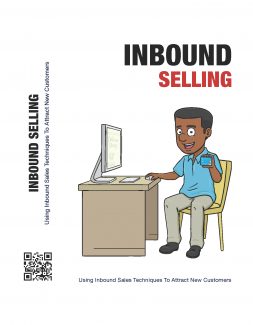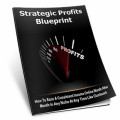
 License Type: Personal Use
License Type: Personal Use  File Type: ZIP
File Type: ZIP
 SKU: 58717
SKU: 58717  Shipping: Online Download
Shipping: Online Download
Ebook Sample Content Preview:
Why Inbound?
Inbound marketing is simply the way we do business most of the time in this age of Social Media and Google. Let’s start with a little definition. Inbound sales refer to sales and marketing you do where the customers find you and then get in touch in one way or another to learn more about what you and your business do. The end goal is of course to turn these prospects into paying customers – ideally repeat customers.
Inbound sales isn’t a completely new idea. Back in the day it used to be called word of mouth advertising. Before the internet, this left us with a fairly limited reach and slow growth. To grow faster and get more leads into the sales funnel, businesses would rely on outbound marketing like most traditional advertising channels to gain their customers. The internet and content marketing have changed the game. Today inbound marketing is a much better play and frankly a better way to attract customers. No one likes to be cold called and sold to. But we are all on Facebook and Google each day actively searching for information, products, and solutions. The goal with inbound marketing is to make sure you and your business are there when those searches are made.
In other words, instead of spending thousands of dollars in advertising both online and offline, or paying for direct mailers, you’re creating and sharing lots of content in a variety of formats so your future clients can find you.
In the introduction we briefly talked about inbound and outbound phone calls to explain the difference between inbound and outbound sales. Let’s look at that in a little more detail and how it translates into online sales. !Outbound calls are calls where you, the sales person, call a list of numbers, hoping to come across a potential customer. Often you don’t know much about the person you’re calling and you have no way to qualify if they’d make a good prospect before making the call. And of course you have no idea if the person you’re calling is even remotely interested in what you have to offer right now.
Let’s say you work for a car dealership and are making outbound calls to try to sell a new car. You have no idea if the people you’re calling are in the market for a new car right now. That makes finding the right prospect and closing the sale a pretty tough proposition.
An inbound call on the other hand is when the customer calls you. He or she has learned about you through various advertising methods or word of mouth and is calling you when they are ready for what you have to offer. Going back to the car dealership example, this is when a potential customer calls you with questions about a particular car, or wanting to set up a test drive. Here the chances of making a sale are much higher.







